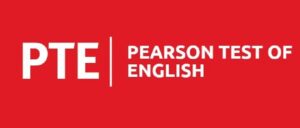What is IELTS
IELTS stands for International English Language testing system; so basically it is a test of English and comprehension skills. This exam is given by candidates to move abroad majorly for two reasons; for studying and for settling abroad. Students who want to move abroad for studies need to give IELTS –Academic and people who want to move abroad for PR need to give IELTS-General.
Importance of good IELTS score
There are four sections in IELTS: Reading, listening, speaking and writing. There is no passing and failing marks for IELTS Academic and IELTS General Test. Scores are graded on the 9-band system. In reading and listening section, there are total 40 questions in each section. Each section which ranges from band 1 to 9. Each university/institute or organization sets its own level of IELTS scores to meet its individual requirements.
What is a good IELTS score?
Overview of the IELTS scoring system
IELTS results are reported on a 9-band scale. They are designed to be simple and easy to understand. They are reported as band scores on a scale from 1 (the lowest) to 9 (the highest). All formats of IELTS use the same scoring system. The overall band score is the average of the four sections scores, rounded to the nearest whole or half band. The sections scores are weighted equally. If the average of the four sections ends in .25, the overall band score is rounded up to the next half band, and if it ends in .75, the overall band score is rounded up to the next whole band.
Some examples are as follow:
| Example | Listening | Reading | Writing | Speaking | Avg of Four Sections | Band Score |
| Test taker 1 | 7 | 8 | 6.5 | 7 | 7.125 | 7 |
| Test taker 2 | 6.5 | 6.6 | 5 | 7 | 6.25 | 6.5 |
| Test taker 3 | 7 | 7 | 6.5 | 7 | 6.875 | 7 |
What is considered as a good IELTS score
For general candidates, a good IELTS score is 8777 means 8 in listening and 7 in each of the other three sections. While for academic, the students can target a band score from 6-7, as it depends on the university or institute the candidate is applying to. An average score for a candidate going on a student visa is 6.5 bands with minimum 6 in each section.
| Band score | Skill level | Description |
| 9 | Expert User | The test taker has fully operational command of the language. Their use of English is appropriate, accurate and fluent, and shows complete understanding. |
| 8 | Very Good User | The test taker has fully operational command of the language with only occasional unsystematic inaccuracies and inappropriate usage. They may misunderstand some things in unfamiliar situations. They handle complex and detailed argumentation well. |
| 7 | Good User | The test taker has operational command of the language, though with occasional inaccuracies, inappropriate usage and misunderstandings in some situations. They generally handle complex language well and understand detailed reasoning. |
| 6 | Competent User | The test taker has an effective command of the language despite some inaccuracies, inappropriate usage and misunderstandings. They can use and understand fairly complex language, particularly in familiar situations. |
| 5 | Modest User | The test taker has partial command of the language and copes with overall meaning in most situations, although they are likely to make many mistakes. They should be able to handle basic communication in their own field. |
| 4 | Limited User | The test taker’s basic competence is limited to familiar situations. They frequently show problems in understanding and expression. They are not able to use complex language. |
| 3 | Extremely Limited User | The test taker conveys and understands only general meaning in very familiar situations. There are frequent breakdowns in communication. |
| 2 | Intermittent User | The test taker has great difficulty understanding spoken and written English. |
| 1 | Non User | The test taker has no ability to use the language except for a few isolated words. |
| 0 | Did not attempt the Test | The test taker did not answer the questions. |
How to interpret your IELTS Score
The listening and reading section scores are given out of 40 as there are total of 40 questions in each of the sections and then they are converted into band scale from 1-9.However , for writing and speaking there are certain parameters which need to be taken care of.
Let us see sectional wise band score:
The IELTS Listening test contains 40 questions. Each correct answer is awarded one mark. Scores out of 40 are converted to the IELTS nine-band scale. Scores are reported in whole and half bands.
IELTS Listening Scores Calculation
| CORRECTANSWERS | BAND SCORES |
| 39-40 | 9 |
| 37-38 | 8.5 |
| 35-36 | 8 |
| 32-34 | 7.5 |
| 30-31 | 7 |
| 26-29 | 6.5 |
| 23-25 | 6 |
| 18-22 | 5.5 |
| 16-17 | 5 |
| 13-15 | 4.5 |
| 11-12 | 4 |
So, if a student gets 34/40 in listening then the band score for him will be 7.5 bands.
Reading Academic
| Correct answers | Band score |
| 40-39 | 9 |
| 38-37 | 8.5 |
| 36-35 | 8 |
| 34-33 | 7.5 |
| 32-30 | 7 |
| 29-27 | 6.5 |
| 26-23 | 6 |
| 22-19 | 5.5 |
| 18-15 | 5 |
| 14-13 | 4.5 |
| 12-10 | 4 |
| 9-8 | 3.5 |
| 7-6 | 3 |
| 5-4 | 2.5 |
Reading Section – General
The IELTS Reading test contains 40 questions. Each correct answer is awarded one mark. Scores out of 40 are converted to the IELTS nine-band scale. Scores are reported in whole and half bands.
| Correct answers | Band scores |
| 40 | 9 |
| 39 | 8.5 |
| 37-38 | 8 |
| 36 | 7.5 |
| 34-35 | 7 |
| 32-33 | 6.5 |
| 30-31 | 6 |
| 27-29 | 5.5 |
| 23-26 | 5 |
| 19-22 | 4.5 |
| 15-18 | 4 |
| 12-14 | 3.5 |
| 9-11 | 3 |
| 6-8 | 2.5 |
Writing
Examiners use assessment criteria to award a band score for each of the four criteria:
- Task Achievement (for Task 1), Task Response (for Task 2)
- Coherence and Cohesion
- Lexical Resource
- Grammatical Range and Accuracy
The criteria are weighted equally and the score on the task is the average.
Speaking
Examiners use assessment criteria to award a band score for each of the four criteria:
- Fluency and Coherence
- Lexical Resource
- Grammatical Range and Accuracy
- Pronunciation
The criteria are weighted equally and the Speaking band score is the average.
Factors that affect your IELTS score
In the listening section, your focus and ability to understand accent will define your band scores. So, one must be familiar with different accents like North American, British, Canadian, Australian etc. Similarly, in the reading section your comprehension skills are checked which means how well you understood the text .Other factors like grammar and vocabulary also play an important role in it. However in writing and speaking sections there are other parameters which affect a candidate’s score, along with vocabulary and grammar. In the writing section, task achievement for task 1 is tested. Task 1 is letter writing for general candidates and reporting an image for academic candidate. In letter writing , how well the candidate has addressed all parts of the letter and in report an Image , how well one has understood the image given like pie chart , bar graph, table etc. and how well it has been described. Task 2, on the other hand is essay writing for both general and academic students. Factors that play an important role for this is task response i.e. how well one has understood the topic and explaining the key factors. The more you elaborate with examples, your band scores will improve. In the speaking section, some factors like your fluency and coherence along with pronunciation and accuracy is tested. If you speak nonstop and do not stammer, especially in round 2 which is of cue card, then you get good band scores.
UNDERSTANDING THE TEST FORMAT
There are four sections in IELTS and one needs to have separate approach to ace each section. Let us discuss it one by one.
- Writing section- In this section essay writing is common to both general and academic students. The total duration is 40 minutes and word limit is 250 words. There are four categories of essay which one needs to be familiar with viz: problem solution, merit demerits, opinion based and discussion based. It has more weightage than task 1. One needs to structure the essay in different paragraphs and each paragraph should be logically connected. In the task one of writing section there are separate topics for academic and general candidates .For general, it is letter writing. In this section, all bullet points need to be addressed .The task is for 20 minutes and word limit is 150 words. The letter can be formal, informal and semi-formal. For academic students, the task is reporting an image. Again one gets 20 minutes to finish this task and word limit is minimum 150 words. Images asked are generally table, pie chart, line graph, bar graph, maps and process cycle .It can be a single image or a combination of two.
- Listening section – This section is same for general and academic candidates. There are total 40 questions and total time to solve is 30 minutes.10 minutes extra are given to candidates who are pen and paper based exam. In listening, one hears four different recordings viz: a conversation between two people based on social context, a monologue based on local facilities; like a garden in your neighborhood. Recording 3 is a group conversation for an assignment and recording 4 is a monologue on an academic lecture. There are variety of question types which ae tested viz: multiple choice questions, form, table, note, flowchart completion, short answer questions, and sentence completion, matching features and labelling a diagram.
- Reading section – This consists of 40 questions and three sections R1, R2 AND R3. The reading section is different for academic and general candidate. However, the topics remain more or less the same. The topics include true, false, not given, yes, no, not given. This is the most important topic as one gets 5-13 marks questions from this topic. There are other topics also like Matching features, Matching headings, matching information and matching sentence endings. Out of these, one can again expect two types. Then we have completion questions like note, table, flowchart, sentence, diagram, summary completion questions. Again one can expect 3-4 types out of these in the exam. Other than these there is short answer questions and multiple choice questions: single and multiple where again a 5 -7 marks questions can be asked. One needs to learn the tips and tricks for each topic and finish each section in 20 minutes so that one can complete the entire paper.
- Speaking section- This is held on a separate date. There are three parts in speaking : Part 1 is general introduction which is an ice breaking round where general questions about a candidate’s name, place , hobbies, family ,what he does, neighbors, sports, food ,TV channels he watches. Part 2 is a que card based question, where a question followed by three –four sub points are asked and a candidate needs to answer that. One gets one minute to prepare and 2 mins to speak on the topic. This is the most scoring topic. One needs to speak non-stop for 2 minutes to get a good score. Part 3 is a discussion based round , also known as question and answer round where a candidate is asked questions and he needs to give lengthy answers with reasons .The total speaking is for 11-14 minutes.
Tips for improving your IELTS Score
English is not a first language in India, so being born and raised in a country with English being second language, one needs to work hard to achieve success in IELTS. English exams in school have the pattern of reading comprehension followed by questions which helps to familiarize one with the IELTS pattern to a certain extent. IELTS test is all about how comfortable and fluent you are with this language. In this blog, I will discuss tips to be successful in upcoming exams.
- Decent Vocabulary– To ace this exam, one does not need fancy words or jargons. Instead, one can use compound and complex sentences and common synonyms of certain words in the writing and speaking section. For example- Steady increase or steep decline in task 1 and words like furthermore, moreover, besides, than etc., to ace your writing and speaking scores.
- Familiarize yourself with different question types in writing-One needs to be familiar with all types of questions in each section. For instance, one needs to practice different images in task 1 of writing for academics like pie chart, line graph, bar graph, table, process cycle etc. Similarly for general candidates, they need to be familiar with different types of letters like formal, informal and semi-formal and subcategories like application, complaint, request, apology etc.
- Essay writing template– Create a template for different essay types asked in exam viz: problem solution, merits-demerits, opinion and discussion. Also practice minimum 3 essays from each category and have a proper structure for essay. One should begin with introduction, have two body paragraphs with proper explanation and examples followed by a concluding paragraph. This will help to increase the scores.
- Practice different reading question types-There are 13 different question types which are asked in Reading section so one needs to be adept with each type by learning the techniques to crack this section.
- Get familiar with different accents for listening –To ace the listening section, one needs to be familiar with different accents like Australian, New Zealand, British, North American and Canadian.
- Speaking section– Listen carefully how and what the examiner ask during the speaking interview. If, for instance the examiner is asking talk about your place where do you stay then answer should be your current place. Look for the tenses in which the examiner is asking you the questions in.
- Choice between computer based and pen and paper– You should choose the mode of exam in which you are more comfortable. If your typing skills are good, go for computer based. If you are not well versed with computer and your handwriting is also good, go for paper based exam. Decide which pattern should suit you.
- Practice long hour sitting– This is very important as the you need to practice sitting for at least 3 hours so give complete mocks in one go so that you get into the habit of sitting and this way you will be able to face the real exam.
Common mistakes to avoid during the IELTS exam
Mistakes are very common, especially in tests. There are some common mistakes which candidates make during the test.
- Spelling errors and grammar – While writing essays, care needs to be taken to avoid spelling mistakes. The common errors which candidate make while transferring the answers in the OMR sheet for reading and listening , is of spelling and singular and plural errors of grammar. Also, while writing essays, one needs to use correct tenses and pronouns.
- Poor vocabulary – One needs to use synonyms of the different words while writing the essays. For example, a candidate write a word “government”, so instead of using the word government again and again, one can use synonyms like ruling party, administrative body etc.
- Time management – The most common mistake which students make is managing their time. One needs to plan well in advance on how to attempt your paper especially in the reading section .As this section is of 1 hour, so candidates should spend 20 mins in each section so that they can finish their paper on time.
- Lack of focus – Care needs to be taken in the listening section as one needs to focus a lot because if you lose focus, you will miss out the answers. So it is important to be focused while attempting all sections, especially the listening one.
- Not enough practice – One common mistake which candidates make is not enough practice. One needs to practice sectional tests and give lot of mock so that one is aware of the pattern before the final exams.
- Fluency – One needs to be fluent and speak nonstop during the speaking section. Also, care needs to be taken while pronouncing certain words. To ace this section, one needs to speak nonstop and with correct grammar too.
How to prepare for IELTS Exam
Overview of the exam format
As mentioned above IELTS has four sections, reading, and writing, listening and speaking. In the listening section is same for general and academic candidates. There are total 40 questions and total time to solve is 30 minutes.10 minutes extra are given to candidates who are pen and paper based exam. In the speaking section, there are three parts Part 1 is general introduction. Part 2 is cue card round and part 3 is discussion-based round. The reading section consists of 40 questions and three sections R1, R2 AND R3. The reading section is different for academic and general candidate. However, the topics remain more or less the same. In the writing section essay writing is common to both general and academic students. The total duration is 40 minutes and word limit is 250 words. In the task one of writing section there are separate topics for academic and general candidates .For general, it is letter writing. For academic, it is report an image. The task is for 20 minutes and word limit is 150 words.
Tips and strategies to get a good IELTS score
As mentioned above, if one follows proper time management, does a lot of practice, solve time bound mocks, know the exam pattern and understand the variety of question types then one can ace the exam.
Practice resources to get a good IELTS score
One can practice from Cambridge books 11 till book 17. Each book has 4 mocks which covers all the sections viz listening, reading, writing, and speaking
CONCLUSION
The secret to success in the IELTS is practice and intelligence. You should consult others who have taken the exam and also practice. The more you practice the better you will become and the more successful your final exam will be.










